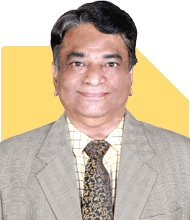Aspiring PhD Physics Student Seeking Guidance: What Procedures Do I Follow to Study Abroad?
Dr Pananjay K Tiwari | Answer |Ask -Follow
Study Abroad Expert - Answered on Aug 13, 2024
They also guide PhD students who are studying internationally with their research.
Dr Pananjay has 21 years of academic and research experience and has published several books and research papers in various Indian and international journals.
He is a gold medallist with a master’s degree in science and a PhD in environmental sciences from the Hemvati Nandan Bahuguna Garhwal Central University, Uttarakhand.... more

नमस्कार, मैं विदेश में पीएचडी (भौतिकी) करना चाहता हूं, इसके लिए क्या प्रक्रिया अपनानी होगी?
डॉ. पनंजय
संस्थापक, श्री ओवरसीज एजुकेशन
www.shreeoverseaseducation.com
आप नीचे ऐसेही प्रश्न और उत्तर देखना पसंद कर सकते हैं
Geeta Ratra | Answer |Ask -Follow
Visas, Study Abroad Expert - Answered on Nov 07, 2023
Geeta Ratra | Answer |Ask -Follow
Visas, Study Abroad Expert - Answered on Feb 15, 2024
Maxim Emmanuel | Answer |Ask -Follow
Soft Skills Trainer - Answered on Jul 29, 2024
Dr Karan Gupta | Answer |Ask -Follow
International Education Counsellor - Answered on Jul 22, 2025
Dr Dipankar Dutta |1837 Answers |Ask -Follow
Tech Careers and Skill Development Expert - Answered on Dec 05, 2025
Dr Shyam Jamalabad |108 Answers |Ask -Follow
Dentist - Answered on Dec 05, 2025
Dr Shyam Jamalabad |108 Answers |Ask -Follow
Dentist - Answered on Dec 05, 2025
Dr Shyam Jamalabad |108 Answers |Ask -Follow
Dentist - Answered on Dec 05, 2025
Dr Dipankar Dutta |1837 Answers |Ask -Follow
Tech Careers and Skill Development Expert - Answered on Dec 05, 2025
Ulhas Joshi |280 Answers |Ask -Follow
Mutual Fund Expert - Answered on Dec 05, 2025
Dr Dipankar Dutta |1837 Answers |Ask -Follow
Tech Careers and Skill Development Expert - Answered on Dec 04, 2025
Ravi Mittal |676 Answers |Ask -Follow
Dating, Relationships Expert - Answered on Dec 04, 2025
Anu Krishna |1745 Answers |Ask -Follow
Relationships Expert, Mind Coach - Answered on Dec 04, 2025
Anu Krishna |1745 Answers |Ask -Follow
Relationships Expert, Mind Coach - Answered on Dec 04, 2025





























